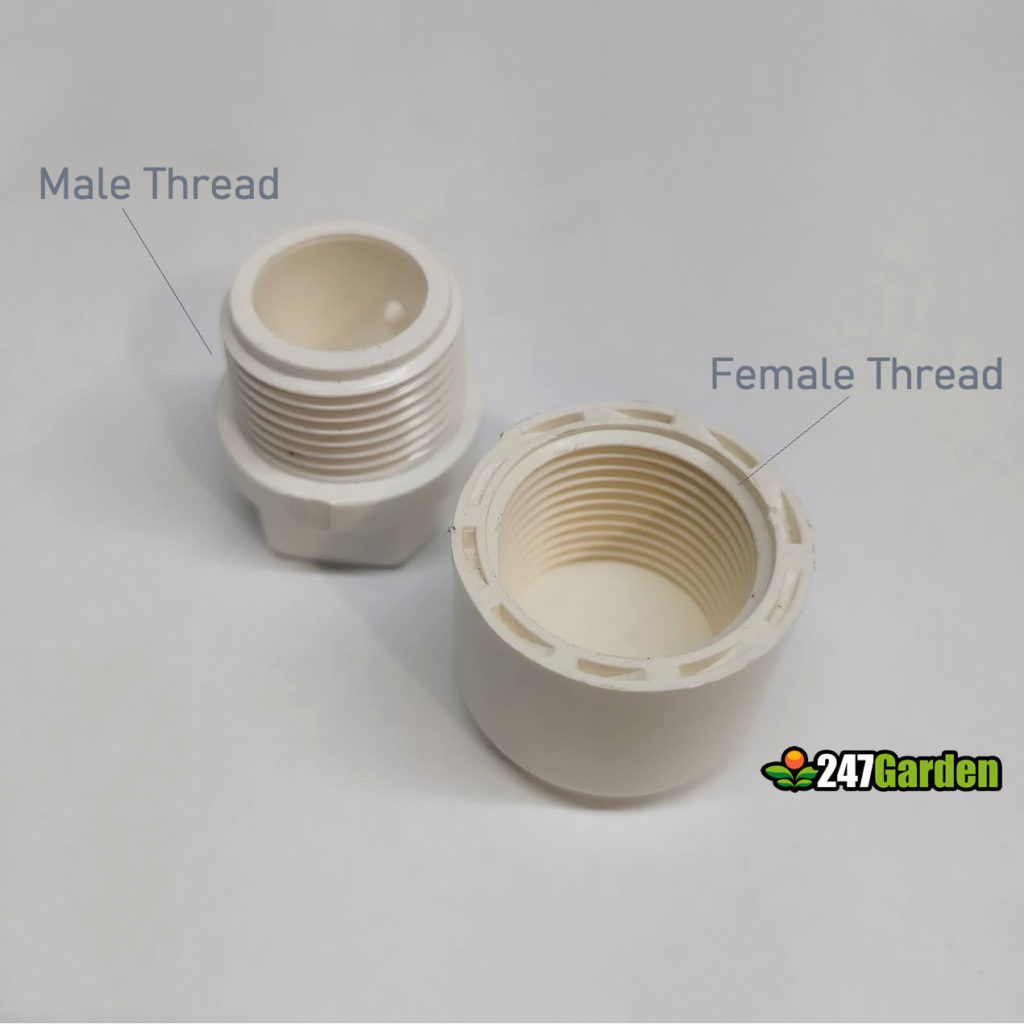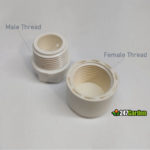PVC male and female threaded fittings are commonly used in plumbing and irrigation systems to connect pipes and components. Here's a breakdown of their differences:

PVC Male Threaded Fitting
- Design: The male threaded fitting has external threads on the outside of the fitting.
- Connection: Screws into a female threaded fitting or a threaded opening on a pipe or component.
- Usage: Often used to connect pipes or fittings with internal threads. For example, a PVC male threaded adapter can be used to connect a plain end pipe to a female threaded fitting.
PVC Female Threaded Fitting
- Design: The female threaded fitting has internal threads on the inside of the fitting.
- Connection: Accepts the male threaded fitting or the threaded end of a pipe or component.
- Usage: Commonly used to connect pipes or fittings with external threads. For instance, a PVC female threaded adapter can be used to connect a threaded male pipe end to another pipe.
Key Differences
- Thread Position:
- Male: External threads.
- Female: Internal threads.
- Connection Method:
- Male: Screws into a female threaded fitting.
- Female: Accepts a male threaded fitting.
- Typical Applications:
- Male: Often used to connect to female threaded fittings, valves, or other components.
- Female: Used to connect to male threaded fittings, pipe ends, or components.
Examples
- PVC Male Adapter: Used to connect a plain end pipe to a threaded component.
- PVC Male Threaded Plug: Used to plug any female end of the pipe.
- PVC Female Adapter: Used to connect a threaded male pipe end to a plain end pipe.
- PVC Female Threaded Cap: Used to plug any male end of the pipe.
Understanding the differences between these fittings helps ensure the correct selection for your plumbing or irrigation project, leading to a secure and leak-free connection. If you are in the market for PVC fittings, feel free to check out all the NSF-listed ASTM D2465/D2466/D2467 fittings from 247Garden.
Related Products
-
 1 in. Schedule 80 PVC Male Adapter Pipe Fitting 1" MNPT x Slip/Socket NSF ASTM D2467/D2464 NPT$0.53 As low as $0.480 in stockOut of stock
1 in. Schedule 80 PVC Male Adapter Pipe Fitting 1" MNPT x Slip/Socket NSF ASTM D2467/D2464 NPT$0.53 As low as $0.480 in stockOut of stock -
 2 in. Schedule 40 PVC Female-Threaded NPT End Cap Pipe Fitting Pro Plumbing-Grade NSF SCH40 ASTM D2466 2" FPT$0.84 As low as $0.760 in stockOut of stock
2 in. Schedule 40 PVC Female-Threaded NPT End Cap Pipe Fitting Pro Plumbing-Grade NSF SCH40 ASTM D2466 2" FPT$0.84 As low as $0.760 in stockOut of stock


































